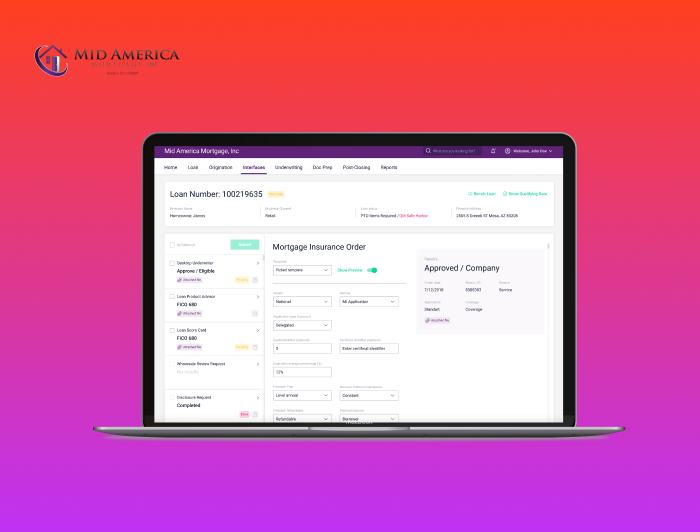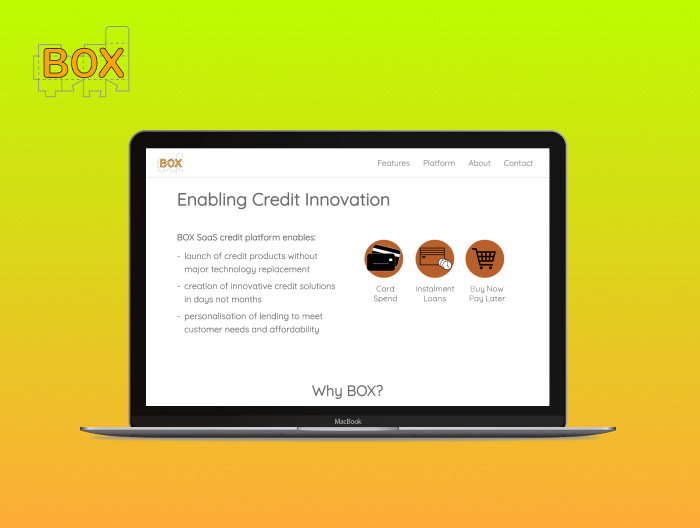
Digital Banking and Virtual Banks: The Future of Commercial Banking in 2022 and Beyond
What Are the Advantages of Digital Banking?
There is no short answer to this question. Businesses can pursue different goals by providing their clients with an extended range of services. Yet, it is known for sure that there are universal advantages for every company to experience from digitalization. Let’s cut to the chase and talk a bit more about them.
Digital banking advantage #1: Improved user experience
Sure enough, “improved user experience” sounds as vague as it comes, but digital banking brings your customers closer to you, and it’s a fact. People today want to feel connected with the brand they are using. This is why virtual banks are way closer to their customers. This is the customer-centric model that lies at the core of their operations and helps them learn more about their customers’ preferences. As a result, a company aims at peculiar targets, knowing what to do in the short and long strategic runs.
The thing that is even more important is that it helps you establish omni-channel communication with your customers. Letting them choose any platform that they find the most convenient to use is a cutting-edge competitive advantage. As soon as the person thinks, “I’m being taken proper care of”, the aforementioned connection with the brand is being established. And there is no better way to show your drive to care about your customers than to stay available for them around the clock

Digital Banking Advantage #2: More Customers
Have you ever heard of the word of mouth advertisement? This is one of the most obsolete and yet most efficient marketing tools used for promoting a product by the customers themselves. Here’s how it works: an average Jane Doe customer has just lived through a top-notch experience of communicating with her online bank. It let her deal with all of her requests within a matter of seconds. Rest assured, she would be more than keen on sharing this experience with her friends. She was served swiftly and efficiently. People appreciate it these days.
Banks and credit unions can go and brag about their outstanding social media marketing campaigns and run ads here and there. But the ultimate goal of any marketing campaign is to reach the “the rumor has it” effect. As soon as our Jane Done experiences the new system, expect her to spread the word with her friends about how pleasing it was.
For example, she will tell them how fast she could contact your organization’s representative, check the balance on her credit cards or savings accounts, or even wire an international money transfer to her bank account. Jane’s friends will ponder over the need for switching to your bank’s services. This is precisely how bank digitalization sets a chain reaction of positive changes for your bank.

Digital Banking Advantage #3: Efficiency Upswing
Those are not only financial processes that are nowadays fast as lighting. Customers are fast as well when it comes to changing their preferences. As soon as one of your processes goes slow, expect them to consider the alternatives kindly offered to them by your competitors. Every single process in your system has to live up to the efficiency expectations. Banking in 2022 must be quick, convenient, and outrageously smooth.
From electronic signature to top-notch apps on customer’s mobile device – the scope of neoteric services offered by digital banking is nowadays immense. An average customer’s mind is nowhere to be found near the idea of coming to a brick-and-mortar bank branch. Digital transformation in fintech can boost your organization’s processes by minimizing human input, and thus human error, and improving the overall functionality of your company.

Digital Banking Advantage #4: Less Damage
Let’s make it clear: digital transformation in financial services is cheaper for you in the long run. Imagine cutting yourself loose from immense maintenance and operational expenditures because your bank functions online. It seems like there is nothing much to explain here. You might be vainly afraid of the price developers ask for helping your institution go digital. Nonetheless, you should definitely be pleased with how cost-efficient it will be at the end of the day.
Digital Banking Advantage #5: Data Driven Decisions
In today’s fintech industry, no shots in the dark are fired. Every decision stems from a thorough analysis of its probable outcomes and the factors preceding it.
The digitalization of banks leads to an expansive usage of data. Every single decision you make will be based on the statistical and empirical data regarding market tendencies, customers’ behavior, economic situation, etc. It will drive you carefully past the steep heels of unanalyzed decisions, so quite eponymous with failure.
If you feel like thought-through decisions with forecastable results are something you could use in your business, welcome to fintech 2022 and beyond.
Digital Banking Advantage #6: Boosted Saleforce
Every employer wants its personnel to stay as efficient as possible. Digital transformation in the finance industry grants you an opportunity to give your staff more time to deal with value-adding tasks.
No more processing of tedious endeavors that a digitalized system can take over with ease. Your people will take care of the tasks that require more prowess and creativity.
Indeed, with all the manual processes being automated, you enter a whole new world of yet unknown opportunities. While the already automated processes are maintaining your customers’ satisfaction levels high, you can regroup your personnel and allocate them to boost the company’s cross-sell and up-sell opportunities.
There is a lot of perks associated with digital banking. Yet, sometimes they do not suffice to explain why an organization should switch to a digitized platform. So, let us discuss it a little bit more

Why Banks Need to Transform into Virtual Banks?
There comes a time in the life of every organization when change is imminent. Regardless of whether you want it or not, industries are changing, and conforming to the new requirements is the only way of survival. There are copious benefits to experience from digital banking. Nonetheless, the ultimate goal of banking transformation is placing customers both at the top and the very bottom of your company’s Maslow’s pyramid.
The whole process boils down to establishing a customer-centric approach, which, in turn, envisages more personalization and mobility.
Customers are no longer eager to wait because you’re the only one who can provide them with adequate financial services. As soon as they find your services too slow, they can easily shift to another provider. It seems like you need to transform not just because it is better for your customers but also advantageous for your organization.
Yet, we have compiled a few more practical reasons for you to justify the need for your bank’s digitalization. Let’s talk a bit more about why banks would actually want and need to transform.
Costs and competition
Without further ado, let us just acknowledge that digital banking is cheaper in the long run. If you don’t embark on digitalization today, sooner or later, you will be left out of the boat called market relevance. You will plunge right into the ocean of redundancy.
Rejecting the need for virtual banks, you automatically make the first step in the direction of losing to your competitors. Refusing to change will bring them a competitive advantage over your business on a platter.
9%
Let’s have a look at what the statistic says. In accordance with Retail Banker International (2019), the number of U.S. brick-and-mortar bank branches has decreased by 9% over the last ten years. No one wants to spend time traveling to your branches or to speak to your clerks.
24%
Another study, conducted by the Boston Consulting Group (2020), showed that 24% of respondents testified to a permanent alteration of the way they communicate with banks. Due to the COVID-19 impact, folks are planning to stop visiting physical bank branches at all.
One should acknowledge that bank customers’ overall behavioral patterns have been subject to a change for the last 15 years.
60%
A study published in Global Banking Special Issue (2020) states that in 2018, more than 60% of the Internet users from the OECD countries preferred online banking to traditional banking.
76%
Under the same study, 76% of bank customers have embarked upon proceeding with at least one digital payment in their payment record.
Digitizing your bank is the best strategy for withstanding the continuously growing competition from the widely-emerging fintech start-ups. Also, it reduces your organization’s operational cost in the long run.
Digital banking will let you allocate human resources to dealing with more creative and meaningful tasks. In contrast, all the back-office operations will be adequately dealt with by the software developed individually to meet your customers’ needs.
Mobile banking in real time
If one could describe the rhythm of today’s life, it would have surely been a life on the go. Today’s society’s hectic pace leaves its residents with no other choice but to opt for mobile and easily adjustable services.
People need fully-functional virtual banks in their pockets right here, right now. Mobile banking helps meet customers’ requirements, thus helping the companies grow. Here’s how it’s done.
Virtual Bank Advantage #1: More Customer Orientation

Virtual Bank Advantage #2: More Efficiency and Compliance

Virtual Bank Advantage #3: Going Green
Mobile banking is deprived of redundant paperwork. With the 21st century making sure that companies become and stay socially-responsible, going green is the best way to do it. Taking care of ecology is not only trendy. It is necessary if we want to have a planet to do business on in some thirty years. Going mobile means going paperless, and thus, environmentally friendly.

Virtual Bank Advantage #4: Improved Marketing
You can advertise more efficiently when you know what your customers like. Mobile banking ensures the usage of an enhanced level of behavioral data available to you through facilitated location-based services.
Tracking your customers’ movement is the best way to learn about their preferences. For example, suppose you see a group of customers visiting a peculiar chain of boutiques. You can embark upon setting up a 5% discount proposal cooperation with the boutique chain. The only condition to meet to get the discount is to pay with a card of your bank.

Virtual Bank Advantage #5: More Rewards
People like rewards, and there is no way to deny it. Rewarding your customers is a crucial element of the virtual banks’ operations. Mobile banking lets you collect more data on your customers’ activity and reward them on the performance milestones.

There are many more advantages that mobile banking can bring to your business. Yet, you’ll get access to the full scope of benefits only when experiencing it in practice, as there is something unique and individualized to take from mobile banking from every company.
Virtual Banks Support Financial Inclusion
Digital banking is here to make sure that you make your customer base grow. Empowering dedicated cash payment fans to start using mobile banking is the first step to do it.
2.5 billion
adults still find it right to conduct payments in cash.They say that it is a safer way to deal with one’s funds (World Bank).
Anyone still opting for cash does so merely because they have no decent access to mobile banking. The planned for the nearest future expansion of the fintech industry envisages omnipresent financial inclusion.
Mobile banking will be available everywhere and to everyone.
Same as customers, banks will be entitled to a lot of mobile banking benefits, including:
#1 Access to financial services
#2 Lower operational cost
#3 A wider range of financial services requested
#4 Reduced risks of theft, loss, and scamming
#5 Economic empowerment through enhanced asset accumulation
#1 Access to financial services
#3 A wider range of financial services requested
#2 Lower operational cost
#4 Access to financial services
#1 Access to financial services
#2 Lower operational cost
#3 A wider range of financial services requested
#4 Access to financial services
#5 Economic empowerment through enhanced asset accumulation
It looks like the need for going digital has been abundantly justified. The scope of benefits offered should suffice for anyone still contemplating over the prospect. Yet, the future of fintech holds a lot of growth avenues to walk along. The sooner you start, the sooner you achieve the summit.

Top 4 Digital Banking Trends for 2022
Every change either sets some trends or follows the already established ones. Talking about digital banking, there are four major trends that have emerged, namely as a result of digital transformation in the finance industry.
Digital banking trend #1: Smart Banking
Smart banking is not banking done by smart people. It is banking done by extensive usage of big data to drive efficient operations, satisfied customers, and a higher profit.
Smart banking envisages harnessing state-of-the-art software to process huge chunks of big data. It will be used to render your customers’ experience more personalized, services efficiently segmentized, tracking and targeting enhanced. Smart banking lets you know what your customers are and what they like.

Digital banking trend #2: Open Banking
Here comes a big secret for you: you won’t be able to work in a secluded banking environment in the years to come. Banks are joining their forces to create a unified banking world that will let them serve their customers easily and with a lot more precision.

70%
Digital banking trend #3: Omni-channel Banking
They say that too many cooks spoil the broth, and it is true. Breaking your bank’s communication structure down into numerous channels makes it hard for customers to perceive it both friendly and easy to use.
An average customer finds it challenging to get various services delivered by your online support team, web portals, physical branches, etc. All they want is to have all the services they need available within a unified platform. Omni-channel banking is a solution for those who want to stay relevant in the banking business of tomorrow.
Digital banking trend #4: Modular Banking
The neoteric banking software of the 2020s will surely be based on modular architecture. It helps implement innovations rapidly and without disrupting their customer’s experience.
Modular architecture renders a bank capable of leaving the market realities behind and creating the ones of its own – based on its customers’ needs. This is nothing but an agile method to introduce new features to your product in a cost-efficient manner.

Digital Transformation in Finance and Banking
The very process of digital transformation in banking might seem to be a tightly tied Gordian knot. Still, there is a smooth method of going through it. Just let the professionals do it. Below, we have prepared an easy to follow guide on how to digitize your bank and how we can help you go through this process with ease.
Of course, it all depends on what your bank needs in terms of digitalization. You might have some of the processes digitized already, and this is the finishing touch of putting it all together that you require. Or you might be still living in the stone age of legacy banking, waiting for the customers at your physical branches. This is exactly why we are here to bring you services in:
Regardless of the bank digitalization stage you find your organization at, you can expect us to go through a stepwise process of shooting the tasks your company faces.
As a matter of fact, there are five core steps to taken.
1. Defining the Culture
If you think that digital transformation is all about putting technology to proper use in your organization, you might be mistaken. Digital transformation in the finance industry is, first of all, about changing the culture of your organization. It must be formed around a totally new customer experience.
During the digital transformation consulting stage, we will talk through every single aspect that requires changing within your organization. Thus, we will lay a stable foundation for the next step to take.
2. Creating the Prototype
Bank digitalization process is based on a thorough study of the bank’s target audience by our business analysts. Hence, basing their decisions on the customers’ preferences, our developers create a prototype, an MVP that can be tested in labs, via hackathons, or in tech partnership with third-party consultants.
This way, we get to know any probable drawbacks of the future product, evading each and every one of them. This is the point where the software developers and business teams start working together. They pave the path to follow for your product to leave the R&D stage as a viable project living up to your expectations
3. From Theory to Practice
Every successful prototype must become a business product. At this stage, the developers start delivering real business apps catering for the automation needs of your existing operations and processes. We put all the new features required by the customers in line with your business process. Reaching this stage, you can expect:
- Current strategy defined;
- Existing solutions analyzed;
- Growth opportunities harnessed;
- Operational efficiency and revenue boosted;
- Roadmap and prototype built;
- Business development plan designed;
4. An Omni-Channel Digital Platform
Moving from theory to practice, we represent an omni-channel platform that will improve your customers’ communication with your bank.
No customer is eager to use two or three apps to make use of your bank’s services. Competitive advantage in today’s fintech industry is being shaped by how swift, efficient, and ubiquitous your banking platform is.
5. Here We Go
When the platform is tested and certified as bugs-free, we deploy it for your customers to use, making sure that we support it whenever needed.
Digital transformation in banks must stem from an extensive market analysis. When we release a product, we are sure it conforms to the market needs, legal requirements, and customers’ desires.

Digitize It All Up
Sooner or later, you will start pondering over the need to keep up with the progress. Seeing the brightest of lights lurking on the horizon of this change is not always easy. It might be dimmed by the fear of changes, and it’s all right.
Digital transformation in banking is both a needed and a desired change because it is the only way to keep the customers you have and attract the new ones. In the third decade of the 21st century, it all boils down to how mobile and diverse your customers find your banking platform.
Give us a call, and let’s digitalize the future of your business together. We are experts in implementing successful bank digitization projects. Everything you need is the desire to start this fascinating journey with us, experienced guides into the world of digital bliss.

References
Banking 2025: Four Pillars of the Digital-First Bank. (2020). Retrieved 24 November 2020
Carbó‐Valverde, S., Cuadros‐Solas, P., & Rodríguez‐Fernández, F. (2020). The Effect of Banks’ IT Investments on the Digitalization of their Customers. Global Banking Special Issue: Contemporary Issues In Banking, 11(51), 9-17
Financial Inclusion Overview. (2020). Retrieved 1 December 2020
Latest Insights
Stay informed on the latest updates and trends to follow in financial services, digital transformation and software development from NerdySoft





